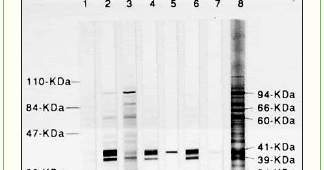

It even has its own section on blood testing but there is no mention of blood testing with PRC. It only talks about PRC swab/culture testing. Nowhere in the handbook speaks specially about PRC blood testing. As I read through the information I’ve gathered before and all resources I've found, including the handbook linked above, my questions from a year ago have still yet to be answered. Again I turn my attention in dealing with HSV and arming myself with more medical literature on this topic. I'm currently experiencing one right now. Its been over a year and half since I’ve last posted here and my last outbreak. However for you a good starting place is a commercial IgG antibody test type specific for HSV1 and HSV2. Your antibodies are always present whether you are having an outbreak or not. Only if the virus has spread internally to the central nerve system would a spinal tap reveal the virus. Hence over 99% of infected people test positive on Westernblot. It looks for the antibodies to the virus and not the virus itself. Westernblot is an entirely different test. Every now and again they may test positive if the virus is 'active' and shedding into the bloodstream. Infected people will just about always test negative with blood PCR. I have no idea why labs do the tests, they're just order takers. I do not know why some doctors order the tests in the hope of a general diagnosis. trying to detect whether the virus has gone traveling in the body and causing serious issues. For HSV PCR is very useful on swabbed lesions and other fluids from spinal taps etc. It is simply fact that people with HSV infections do not have the virus in their blood generally. In HIV-negative persons with HSV infection, suppressive therapy and sexual abstinence during apparent outbreak and prodrome reduce the risk of HSV transmission.Ĭonsistent use of male latex condoms reduces the risk of HSV transmission.Īsymptomatic partners of patients with HSV infection should be counseled on HSV and offered type-specific serologic testing.I'll have a go at some answers. In patients with HSV-2 and HIV infections, episodic or suppressive treatment is not effective in preventing HSV transmission to at-risk partners. Infection with HSV increases the risk of acquiring HIV infection. Patients should be informed of the high incidence of asymptomatic viral shedding and the likelihood of transmitting HSV in the absence of an active outbreak. Patients should be counseled to inform current sex partners about genital herpes and to inform future partners before initiating a sexual relationship. They should be advised to abstain from sex with uninfected partners when active lesions or prodromal symptoms are present. Patients should be educated on the atypical and subtle signs of herpes outbreaks because it improves recognition. Elective cesarean delivery should be performed in laboring patients with active lesions to reduce the risk of neonatal herpes. During pregnancy, antiviral prophylaxis with acyclovir is recommended from 36 weeks of gestation until delivery in women with a history of genital herpes. In patients with HSV who are HIV-negative, treatment reduces transmission of HSV to uninfected partners. Treatment of primary and subsequent outbreaks with nucleoside analogues is well tolerated and reduces duration, severity, and frequency of recurrences. Polymerase chain reaction assay is the preferred method of confirming HSV infection in patients with active lesions. Patients with HSV-2 have a higher risk of acquiring human immunodeficiency virus (HIV) infection. Although HSV-1 and HSV-2 are indistinguishable visually, they exhibit differences in behavior that may affect management. Asymptomatic shedding of transmissible virus is common. Subsequent outbreaks, caused by reactivation of latent virus, are usually milder. Symptoms of primary infection may include malaise, fever, or localized adenopathy. A visible outbreak consists of single or clustered vesicles on the genitalia, perineum, buttocks, upper thighs, or perianal areas that ulcerate before resolving. It is caused by herpes simplex virus (HSV) and characterized by lifelong infection and periodic reactivation. Genital herpes is a common sexually transmitted disease, affecting more than 400 million persons worldwide.


 0 kommentar(er)
0 kommentar(er)
